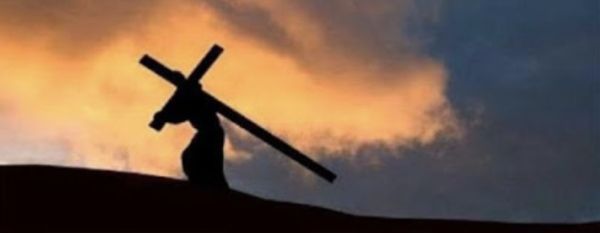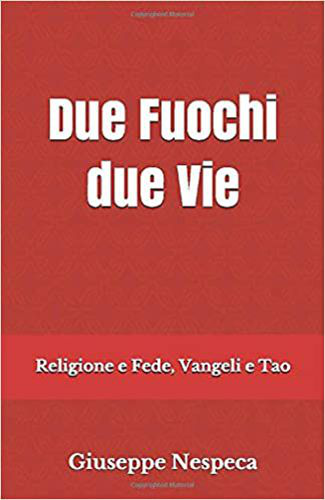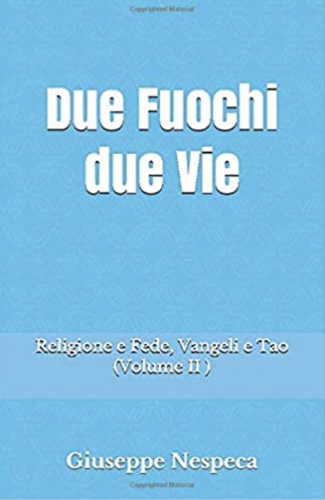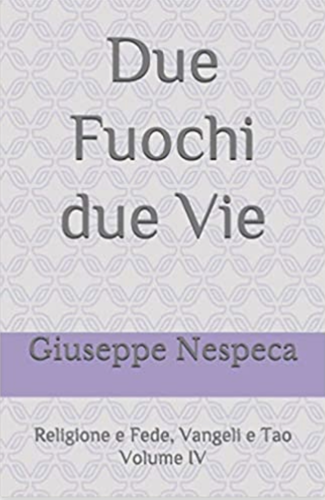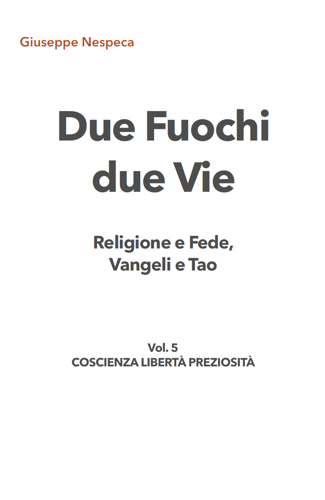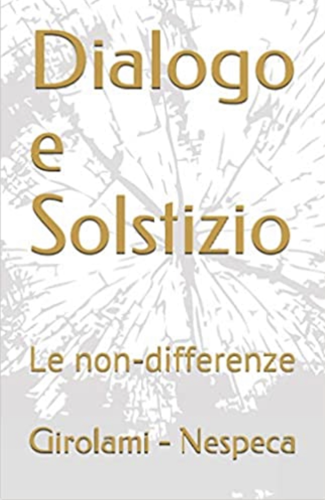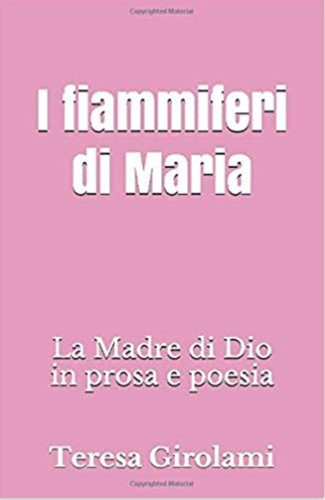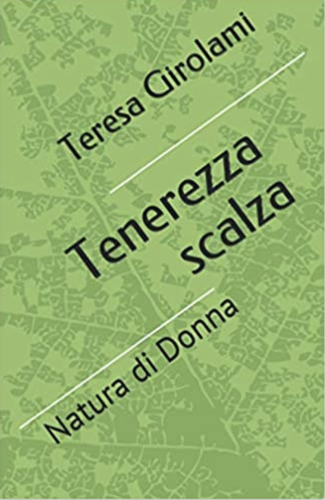Brother, in the brethren all
(Jn 1:29-34)
In the Fourth Gospel, the Baptist is not "the forerunner", but a "witness" of the Lamb Light that raises fundamental questions.
Alarmed, the authorities put him under investigation.
But it is not he who sweeps away 'sin' - the humiliation of unbridgeable distances - and the inability to correspond to the personal Vocation, for Life without limit.
Impediment even underlined by the logic 'of the world': by false teaching, by the very structure of the ancient official institution, so bound up with the intertwining of religion and power.
Condemned at the 'midday' [peak and full light] of Easter Eve, Jesus crosses his earthly turn with the hour when the Temple priests began to immolate the propitiation lambs [originally an apotropaic sacrifice preceding the transhumance].
As with the Lamb of the fathers in a foreign land, who had spared them from slaughter - his Blood gives impetus to cross the land of barren slavery.
"Egypt" of the pharaohs, devoid of warmth and intimate consonance (which lead us to an early death).
As is well known, the effigy of the Lamb belongs to the sacrificial theological strand, stemming from the famous text of Isaiah 53 and from the whole sacred imaginary of the ancient East [which had elaborated a widespread literature and thought on the Messiah King].
According to the biblical conception, the ruler gathered within himself and represented the entire people. The Anointed One would have the ideal task of dragging away and atoning for human iniquities.
But Jesus does not 'atone' but 'extirpates'. Nor does he 'propitiate': the Father does not reject the precarious condition of his creatures, nor does he establish a protectorate favourable to a circle (like the God of archaic religions).
In Christ who 'upholds and takes away' all our shame and weaknesses, the Father's action becomes intimate - and therefore decisive.
He does not annihilate transgressions with a kind of amnesty, even vicarious: it would not be authentic salvation to touch only the peripheries and not the Core, to reactivate us.
An external habit does not belong to us and will never be ours; it is not assimilated, nor does it become real life. Amnesties do not educate, far from it.
It is true that a little lamb in a world of cunning wolves has no chance. To present it, means to see it perish, but not as a designated victim: it was the only way for the beasts that believe themselves to be people to understand that they are still just beasts.
The Risen One introduces a new force into the world, a different dynamism, a way of educating the soul that becomes a conscious process.
It is only by educating us that the Risen One annihilates and overcomes the instincts of the beasts that pounce on each other, believing themselves to be true - even spiritual - human beings.
A third allusion to the figure of the Lamb insists on the votive icon and archetypal category associated with Abraham's sacrifice, where God Himself provides the victim (Gen 22).
Of course he provides: he did not create us angelic, but unsteady, transitory. Yet, every divine Gift passes through our shaky condition - which is not sin, nor guilt, but given; nourishment, and resource.
We are Perfect in the multiplicity of our creaturely sides, even in limitation: a blasphemy for the ancient religious man... a reality for the man of Faith.
The authentic Lamb is not just a (moral) reference: the meekness of those who are called to give everything of themselves, even their skin.
It is an image of the blatant boundary of those who would never make it in life, so they let themselves be found and carried on their shoulders.
In this way, no decision-making delusions.
It will be the Friend of our vocational nucleus who will transmit strength and devise the way to get us back to the Home that is truly ours: the Tent that mends the scattered events.
Home that reknits all the being that we should have - and perhaps could have - brought to bear.
The different paths that lead to the founding Eros that belongs to us, intimate and superior, are both authentic and unique to each one.
The Perfection that will emerge along the Path already corresponds to us.
Then the desire to improve according to ancient or other people's paradigms will no longer be a torment that enervates the soul, diminishing its completeness.
Incarnation here means that the Lamb is a representation of a welcomed - unusual - totality of the divine Face in men.
A totality that is finally firm - paradoxical, reconciled - that recovers its innocent, natural, spontaneous opposite, incapable of miracles.
Difference between religiosity and Faith.
That of the Lamb is not a self already with a course of its own; equipped, self-confident and able to find its way in the world. Perhaps to be accepted, not to be outdone, to always be in the foreground.
It is the passive virtues and weak sides - not the artificial, window-dressing ones - that activate the best, most fruitful parts of us, capable of making us look inside.
All this, in order to walk ourselves and our brothers, overcoming secret sides and anxieties; transmitting life.
Lamb: not a wanting to be there at all costs and as protagonists, always at ease, with exhibited certainties; too exposed to projections, to other desires to be protagonists - and not to lose positions.
When we put ourselves on stage, we remain completely external and displace our faculties, the other capacities of the heart - such as the need to yield, to let go in order to prepare for something else we do not know. And turn our gaze, discover new orientations, or symbiosis with the different.
This is why we speak of a 'revolution of tenderness' [see below] - which cannot be a guided cultural mask, or an expropriating conditioning.
In the end, one notices the artificial people: they play at holiness - some only to gain the spiritual upper hand over the naive and innocent taken in by the authentically interior and fraternal gaze.
The Lamb is the image of a stability in goodness first of all received as a gift and perhaps not even invoked, but recognisable - which then reveals both the innate silence and the unexpected colours of the soul, and of events.
Step by step it becomes a profound knowledge of ourselves, a guiding figure and a solid dialogue to which we entrust ourselves, activating that singular hope filled with intensity that wrenches us from infatuation.
We hang from its universal and simple lips.
They open the consciousness - surpassing both our demons and the shrill resonances of those who flank each other to feel important (and govern relationships).
Embracing the Lamb, we enter into the right spirit of the inner journey. Then we willingly continue - never alone and orphaned; as Togetherness - in the search for our own unique way of completing ourselves and making ourselves Food.
The Tao Tê Ching (xv) asks:
"Who is capable of being motionless in order to make one calmly rest? Who is capable of being placid so as to make one live slowly, removing at length?".
Master Wang Pi comments:
"The man of supreme virtue is like this: his omens are not discernible, the direction of his virtue is not manifest. If he perfects creatures by remaining obscure, he comes to enlighten them; if he makes creatures rest by being motionless, he comes to enlighten them; if he removes creatures by being placid, he comes to make them live.
Christ the Lamb is definitely the beneficial therapeutic effigy of the soul that seeks nourishment - and of our energetic lot, even during normal occupations.
Then it will seem almost like a song, vibrating around.
To internalise and live the message:
What does the expression "the Lamb who takes away the sin of the world" mean to you?
Healthy tenderness: selfishness without reduction
The saint is he who, walking his own path in the wake of the Risen One, has learnt to "identify himself with the other, regardless of where [or] from where [...] ultimately experiencing that others are his own flesh" (cf. FT 84).
No plant lives only in the light: it would die. No animal: it would perish - if it did not have its lair in the shade.
The man who denies his dark side, lies. And he would never enjoy Joy, the fruit of Allence among our multifaceted facets.
Biblical spirituality is not empty; on the contrary, it is very sober and connected to concrete and multifaceted life, at times opposite - not at all prone to consolatory or one-sided sentimentalistic retreats.
In Deut 6:4-5 [Hebrew text] the love owed to the Lord invests "the whole heart" i.e. all decisions, "the whole life" i.e. every moment of existence, and "all your much". That is, the sharing of goods; which the Son of God means in a universal sense.
Jesus' proposal evolves decisively towards overcoming fences, freedom, and awareness.
It tends to recover the entire creaturely being - and is not even inclined to the liturgy of fulfilments, nor to enhancing performances.
The Son of God defines the coordinates of true Love towards the Father in terms that surprise us, because he adds to the ancient criterion the questioning of the intelligence of the things of man, God and the Church.
To realise, to seek to understand, to dialogue in order to enrich oneself, to bring oneself up to date, to scrutinise everything... these are not cerebral and individual trappings, but decisive steps towards communion with others and with the Father [Mt 22:37; Mk 12:30; Lk 10:27].
In pagan religions it made no sense to speak of love for the gods.
They lived capricious lives and decided by lottery who should be favoured among men and who should endure a life of hardship and insignificance.
The lucky (materially blessed) ones gave thanks by fulfilling prescriptions, e.g. worship obligations; the others idem - at least to keep the heavenly hosts happy and thus not be subject to retaliation from above.
Fear creates hierarchical pyramids. Love puts one on an equal footing.
Obviously - with the cloak of the many duties to be observed (in order to curry favour) - it was impossible to have such passion for the denizens of Olympus, or demigods, nymphs, heroes - in short, for anyone above them.
For the unseen and landless, personal and social contempt was of course reserved - sacralised by the unquestionable supernal will, identified with the destination to the lower class; in the case, punitive. However, swampy.
[Other than 'bowels of mercy': a maternal expression, common since the First Testament!]
Then the archaic idea of chastisement or blessing (even without end) for merits heaped up in life formed the fabric of the religious mentality of all times.
This until recently, even in the civitas christiana in which we live.
So the 'theology of retribution' has effectively annihilated all personal passion, with the hypocritical idea of exchange. As well as meritocracy projected even to the rank of Paradise - worst of all selfishness.
By levelling us all to the affixing of 'ticks'.
The complex procedures of the 'weighing of the heart' and the 'divine judgement' on the souls of the dead are well known, all the way back to the sarcophagi and the Book of the Dead of ancient Egypt.
Forensic concatenations, which demeaned the idea of divine Justice, which places just conditions and relations where they are not. But opinions and procedures became common to all beliefs in the Mediterranean basin and the ancient Middle East.
Now detached from the invasion of obsessive catechesis about the terrible Last Judgement populated by acolytes armed with pitchforks, we finally feel understood in a personal way; by exclusively vocational, not massified criteria.
By creaturely datum, we are souls called and activated to a path that can bear unrepeatable fruit - a decisive and untestable contribution to the whole of salvation history. Each one of us.
In the vision-proposal of Jesus the Lamb, our being is not omnipotent in goodness; this does not bring condemnation, not even to the powerless.
We are conformed to the need to receive love - as if we were children in front of Parents who precisely raise their children healthy with an overabundance of initiative, which leads them to surpass themselves.
This, in spite of tantrums; indeed, because of them: a magma of opposing yet malleable energies, which see further than easy identifications, and are preparing for later developments.
The experience of evangelical tenderness does not come from good character and social meekness. But from having experienced first-hand the value of eccentricities - and having developed an understanding of one's own dark sides, or reworked and brought into play deviations that at some point in one's life have become amazing resources.
Even the same evolution and transmutation can be seen in the aspects of ourselves that we do not like and would like to correct... then as the days go by they surprise us, and we discover they are the best part of ourselves: the true inclination and the reason we were born.
Each one's deviant and unbalanced character contains an essential secret of the Calling by Name and one's destiny.
This is the starting point for recognising the specific weight of differences and the equally enriching dissonances of sisters and brothers.
It is not goodism, that of the Lambs (oscillating in situation, and linked to contrived ways, devious interests or partisanship): the opposite!
As Pope Francis said: 'Lambs, not fools; but lambs'.
In personal life and in communion, evangelical Tenderness is real understanding and authentic inclusion of the 'different' - starting not from an erratic, momentary and circle (fickle) ideology but from one's own intimate and relational life experience.
It will lead us to experience a Father who provides well for us, just as we brighten the lives of others - enriching our own! - in the confluence and re-harmonisation of our many faces.
Tenderness in the round, convinced in earnest; without the standardised masks of the usual 'staples' of the banal (recited) 'tenderness' that is perhaps obligatory and activated by a weakened conforming identity.
This is the wise contagion that will revive us from the great global crisis: indulgence that does not become hysterical indolence.
And that does not remain sectoral - because it starts not from external manners or knots, but from being oneself and here recognising the You.
Together all brothers, seeds of the Logos.
For a Tenderness of Dialogue without neurosis.



